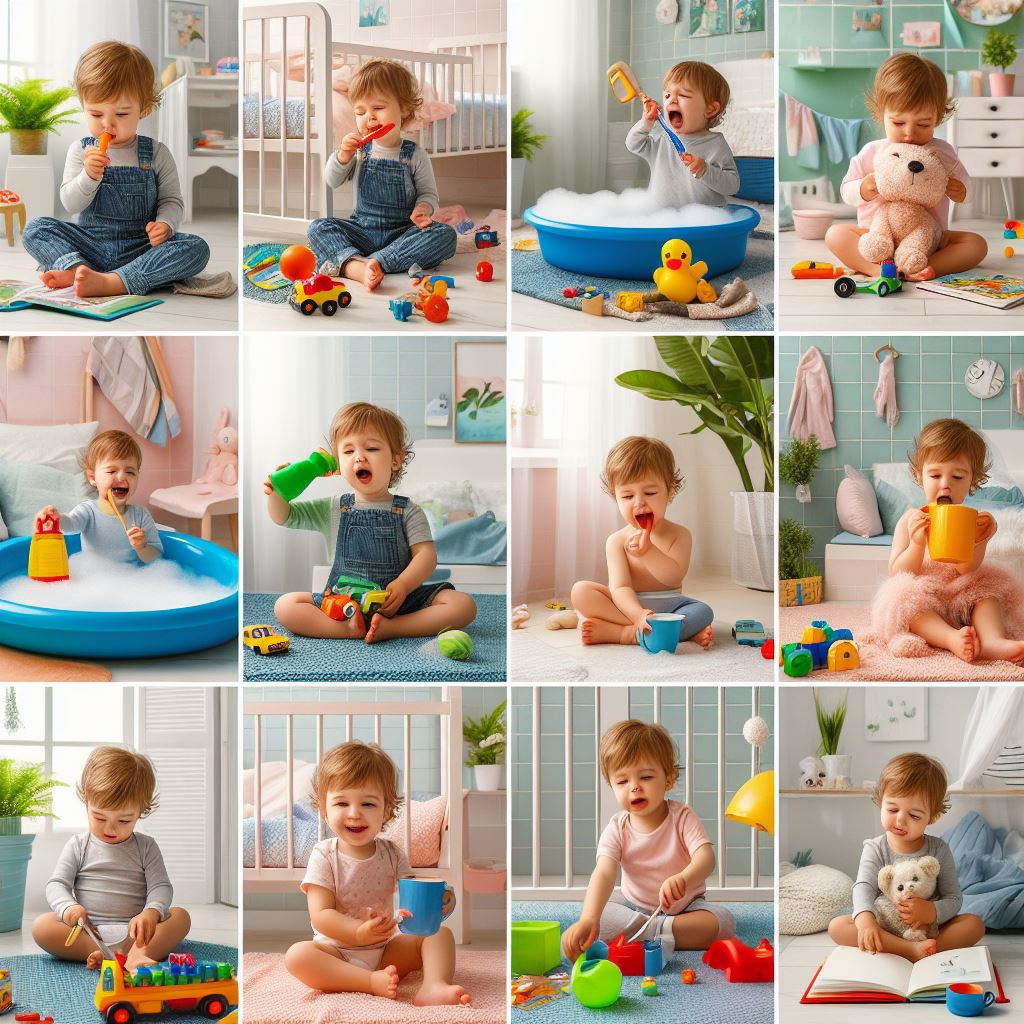Your basket is currently empty!

Spending Entire Day with Toddlers: A Peek into a Sample Schedule
Parenting toddlers can be quite a challenge, even though it’s often portrayed as a joyous experience. Spending entire day with your little one can be exhausting, leaving you feeling drained and disheartened.
Whether you’re a stay-at-home parent or find yourself at home more due to current circumstances, handling your toddler’s needs can be overwhelming. Crafting a tailored schedule for toddlers might be the solution to bringing structure and comfort into your days, benefiting both you and your child.
Understanding the Importance of a Schedule
Children, including young toddlers, thrive on routines, a notion supported by scientific research. For instance, studies on bedtime routines in young children in 2018 revealed that sticking to a schedule—like a consistent sequence of events before bed—enhanced their sleep quality. Additionally, routines contribute to a child’s overall development and well-being.
PC-infophilia.com
Schedules create a sense of security and familiarity, allowing children to focus on learning and mastering new skills. Toddlers, with their growing independence, benefit from structured days, making transitions smoother and potentially reducing resistance during activities.
A Peek into a Sample Schedule for 15 hours
Utilizing a schedule can bring organization to your day. However, consider this sample as a guide, adaptable to your lifestyle. While consistency is vital for establishing a rhythm, flexibility is equally important. If the routine doesn’t fit immediately, be patient; finding the right balance takes time.
7:30 to 8 a.m.: Wake-Up Time While toddlers may have varying wake-up times, aiming for consistency within a range, like between 6:30 and 8 a.m., is beneficial. Adjust the start time accordingly.
8 to 9 a.m.: Breakfast and Tidying Up Start the day with a nutritious breakfast and involve your toddler in simple chores after eating, making it an interactive experience.
9 to 10 a.m.: Unstructured Playtime Unstructured play fosters creativity and language skills. Let your toddler engage in activities like dress-up or building blocks.
10 to 11 a.m.: Outdoor Activities or Indoor Exercise Explore outdoor spaces or have fun indoors to keep active, ensuring a blend of physical and mental stimulation.
11 a.m. to 12 p.m.: Planned Activities or Errands Plan activities like library visits or errands, ensuring variety in your routine.
12 to 1 p.m.: Lunch and Calm Time Create a calm post-lunch environment to prepare for naptime, encouraging relaxation and tidying up.
1 to 3 p.m.: Nap or Quiet Time Establish a consistent naptime for your toddler or engage them in quiet solo activities.
PC-streamlearning.com
3 to 3:30 p.m.: Afternoon Snack Offer a small, nutritious snack to bridge the gap between lunch and dinner.
3:30 to 4:30 p.m.: More Playtime Encourage more free play, supporting your child’s interests without dominating their experience.
4:30 to 5 p.m.: Dinner Preparation Involve your toddler in age-appropriate kitchen tasks, fostering engagement and learning.
5 to 6 p.m.: Family Dinner and Tidy-Up Use family mealtime as an opportunity for bonding and teach the importance of contributing to household chores.
6 to 7 p.m.: Family Relaxation Wind down together with soothing activities before bedtime.
7 to 7:30 p.m.: Nighttime Routine Follow a consistent bedtime routine, including bath time, stories, and cuddles.
7:30 p.m.: Lights Out Customize this schedule to fit your needs while aiming for consistency. Eventually, you’ll establish a rhythm that suits both you and your toddler.

Leave a Reply